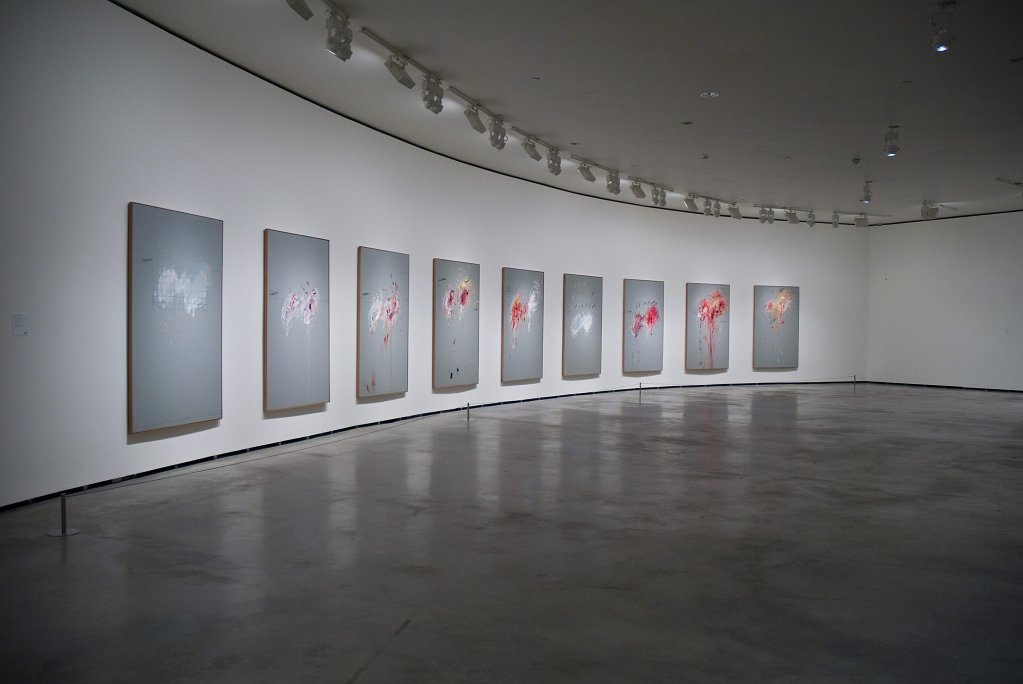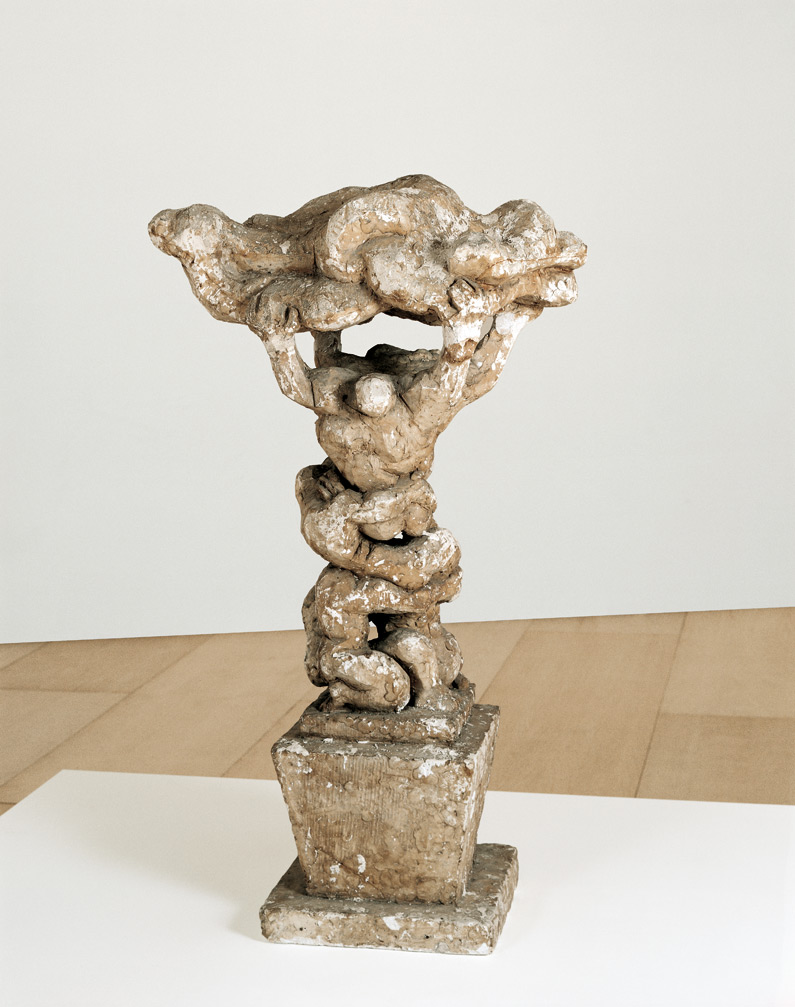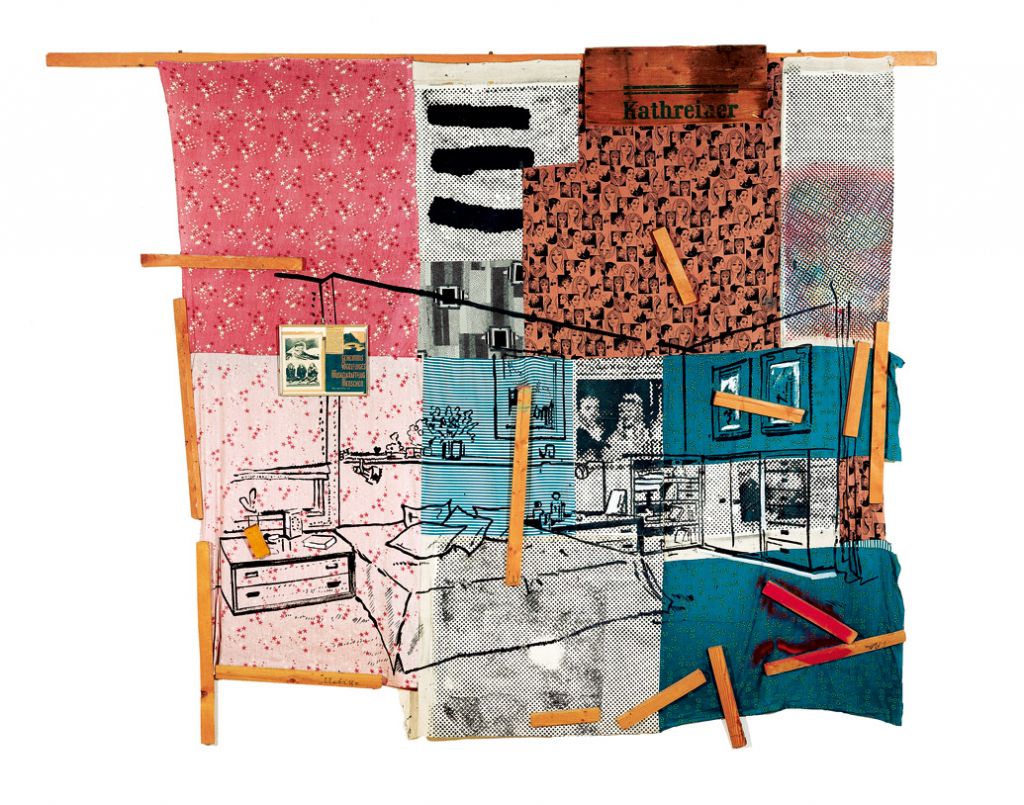Lightning with Stag in Its Glare
1958–85Bronze, iron, and aluminum39 parts, overall dimensions variable
One of Joseph Beuys's most theatrical installations, Lightning with Stag in Its Glare (Blitzschlag mit Lichtschein auf Hirsch, 1958–85) articulates the German artist's abiding fascination with the forces of nature, the transmittance of energy, and states of transformation. The arrangement of this mysterious grouping suggests a natural site like a forest clearing, in which a stag (represented by an ironing board resting on wooden "legs"), the excremental forms of "primordial animals" (made by plunging tools into piles of clay and casting the forms in bronze), and a goat (the hapless three-wheeled cart) are illuminated by a powerful lightning bolt (the weighty triangular form that hangs precariously from a beam). The artist is the human witness to this mythic, symbolic narrative (dominated, as always in Beuys's work, by animals), appearing obliquely in the form of the cast block of earth atop an old sculptor's modeling base.
The only monumental installation Beuys produced in bronze and other metals, Lightning with Stag in Its Glare was based on the artist's The Stag Monument (Hirschdenkmäler), shown in the 1982–83 exhibition Zeitgeist at the Martin-Gropius-Bau in Berlin. Dominating what he termed the Werkstatt (workshop) at Zeitgeist was a huge mass of clay shaped into a hill. Earth functioned as a central material for Beuys, who maintained, "Clay is a substance of earth, the substratum on which we stand and from which we will awaken the planet." When the exhibition closed, a portion of the clay mound was cast as Lightning, the focal point of Lightning with Stag in Its Glare and a metaphor for the power of creativity.
Although Lightning with Stag in Its Glare—which was completed in the year preceding the artist's death—evinces a number of the theories and mythologies from which Beuys drew throughout his career, the meaning of this complex installation may ultimately be located within his definition of social sculpture. Through his interactive and often politically charged practices, Beuys advocated a change in thinking that would develop out of personal understanding rather than technological advances. Intending to stimulate, rather than represent, ideas through his work, Beuys hoped to rejuvenate—or illuminate—society with the fuel of creative thought.
Original title
Blitzschlag mit Lichtschein auf Hirsch
Date
1958–85
Medium/Materials
Bronze, iron, and aluminum
More info
Edition 0/4
Dimensions
39 parts, overall dimensions variable
Credit line
Guggenheim Bilbao Museoa
Perspectives
Lightning with Stag in Its Glare, by Joseph Beuys
Isaki Lacuesta, filmmaker, and Marta Blàvia, member of the Museum’s curatorial staff, take a look at Lightning with Stag in Its Glare (Blitzschlag mit Lichtschein auf Hirsch, 1958–85) and discuss the multiple meanings of one of Joseph Beuys’s most theatrical works.






